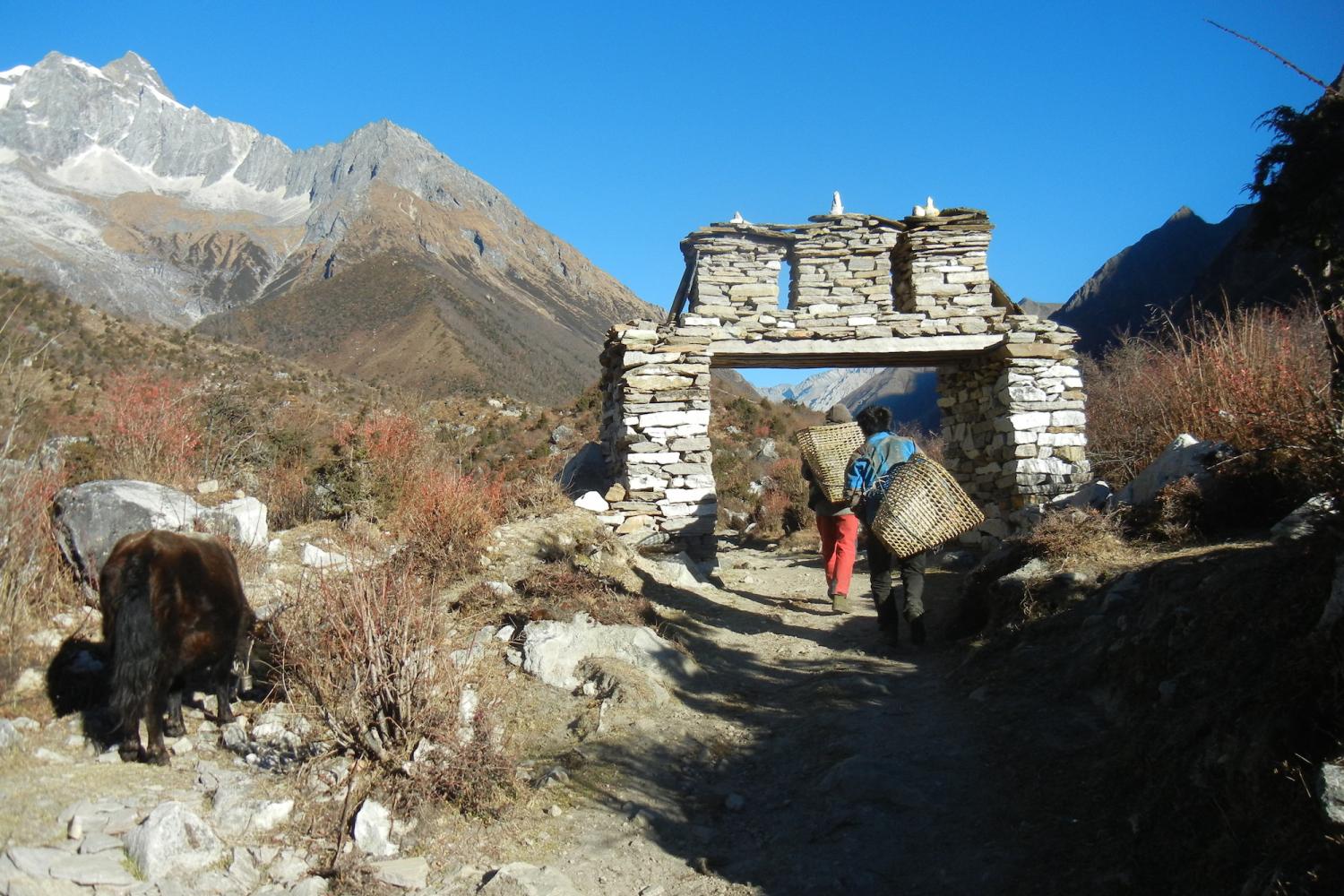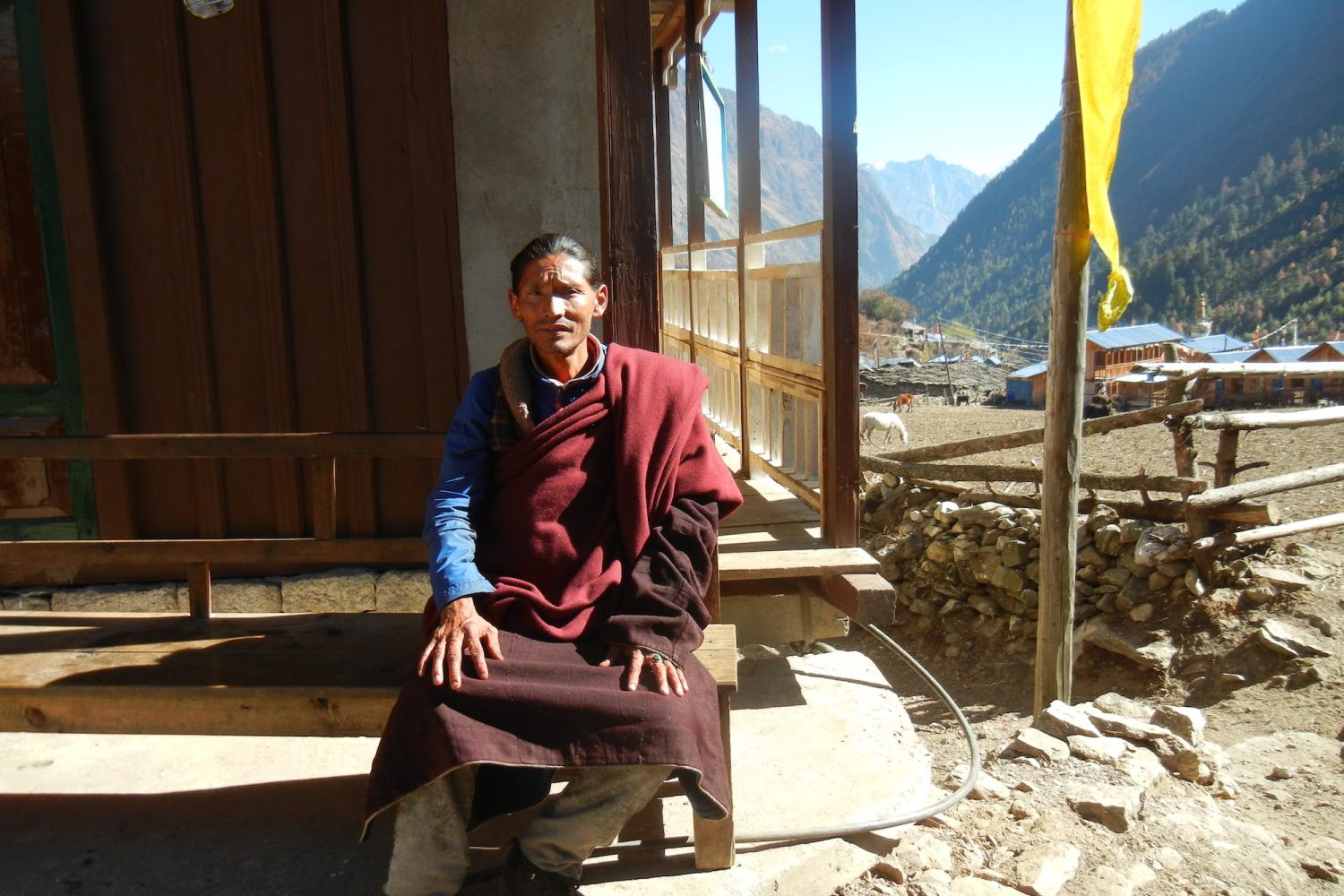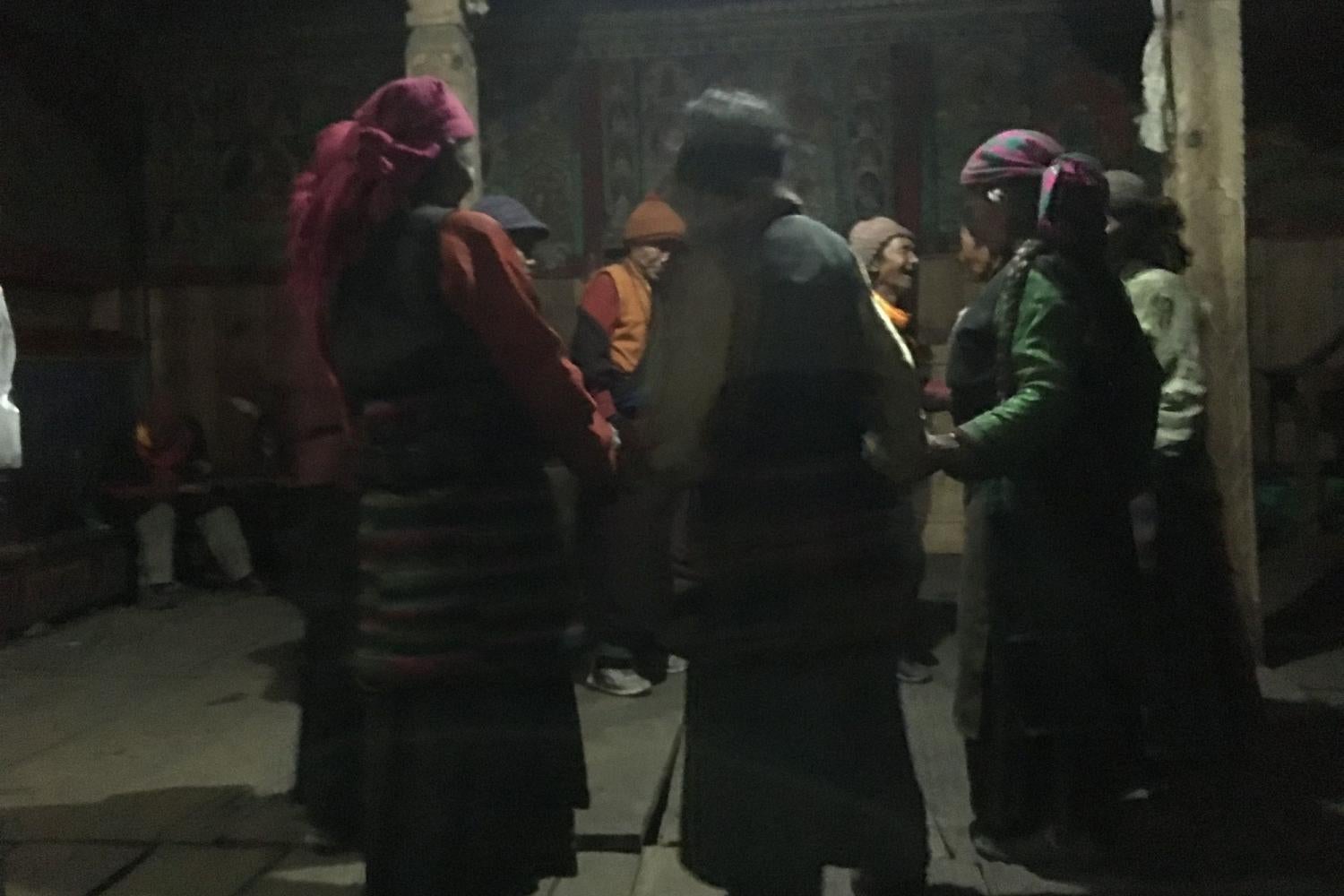Folk Songs in Nubri
Photo essay by Mason Brown.
Nubri is an ethnically Tibetan valley in Nepal’s Gorkha District. It runs parallel to the Tibetan border in the deep valley of the Budhi Gandhaki river between the Himalayan peaks of Manaslu and Serang Himal. Nubri’s four main and eight lesser villages vary in elevation from 4,460 meters at Samdo to 2,130 meters at Bihi village. In November and December 2016, I spent five weeks traveling the valley to record folk songs for my dissertation research (funded by a Fulbright-Hays Fellowship).
For the first three weeks, I traveled in a research party with Geoff Childs and E.A. Quinn as they collected breast milk and measured babies for their ongoing longitudinal study of high-elevation human adaptation. We visited villages of Sama, Lho, Li, Sho, Namrung, Ghap, Tsak, Prok, Bihi, and Gyayul. After they finished their work, I remained with friend and well-known singer Pema Dhondrup at his home in Tsak village. In addition to meeting and recording singers in Sama and Prok, I witnessed the dumche (grub mchod), or harvest-season prayer festival in Namrung, as well as a similar one in Tsak. At these festivals, after the lamas (priests) do pujas (ceremonies) all day in the gompa (temple), the villagers stay up all night singing, dancing, and imbibing arak, the local distilled spirit.
Nubri was historically part of the Western Tibetan kingdom of Ngari, and this influence is still reflected in their dialect and lifeways. Among the songs I collected were several töshay (stod gzhas) songs from Western Tibet, as well as a number of changlü (chang glu), or beer-drinking songs. Even though these songs are customarily sung while celebrating and drinking, their subject matter is primarily Buddhist, evincing the deep religious faith of the Nubri people. While there are now several monasteries in Nubri, they have traditionally adhered to the Nyingma school of Tibetan Buddhism. Within this sect, it is common for ngakpa (married lamas) to perform priestly functions in village temples rather than monasteries. Each village in Nubri still has its village gompa and ngakpas who do rituals to bless houses and fields, heal the sick, and propitiate local mountain spirits and protectors.
The traditional lifeways of Nubri are now under serious pressure to change under forces of globalization and modernization. Up to seventy percent of Nubri youth are now growing up in Kathmandu and India, where parents send them for education. Thus, they are not learning cultural traditions from childhood, as they would have in earlier times. In Kathmandu, many Nubri youth, as well as youth of other indigenous Tibeto-Burman Nepali groups, are learning traditional cultural practices with the exiled community of Tibetan refugees, who are seen as knowledgeable culture-bearers. This causes some tension as the Himalayan Nepalis jealously guard their local identities and resist being labeled as “Tibetan” even as they put themselves under the tutelage of diasporic Tibetans in such sites as the Nepal Tibetan Lhamo Association, or Lhamo Tshokpa (Tibetan Opera Association) in Boudha, Kathmandu. After collecting songs in Nubri I have followed Nubri and other Nepali Himalayan youth as they learn Tibetan opera at the Lhamo Tshokpa.




























